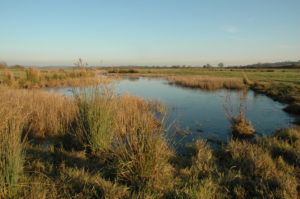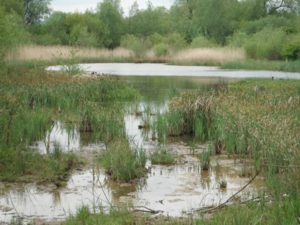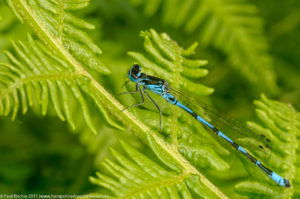The Oxford area: a nationally important hotspot for freshwater biodiversity
30th June 2016
Over the last few years Freshwater Habitats Trust has been developing the concept of Important Freshwater Areas. These are parts of the country with the most important concentrations of freshwater wildlife, whether in ponds, lakes or rivers.
Some of these areas are well-known freshwater hotspots, like the Norfolk Broads and the New Forest, others less so, like the Breckland pingos, and the ponds and tarns of South Lakeland. Amongst these less well-known areas is the area around our main base, in Oxford.

The ponds, lakes, rivers and wetlands in and around the city of Oxford, at the top of the catchment of the River Thames, support an extraordinary variety of freshwater plants and animals. Most notable are the area’s many plants and animals sensitive to water pollution – like Water-violet and the Variable Damselfly – that need high quality habitats that have disappeared from large parts of the landscape. Around Oxford, many of these species are now restricted to a very few areas – like the parts of Otmoor protected both by the RSPB and the Ministry

of Defence, or in the reserves managed by the local wildlife trust. Ponds made by sympathetic farmers and at our own Flagship Pond site at Pinkhill Meadow, in a long-term collaboration with Thames Water and the Environment Agency, are also critical for some of the most endangered species. These sites also show how new ponds can help the most vulnerable species as well. But the area is on a knife edge: many of the special species have been slowly declining for years, and some have already gone. For example, this area was the last place in England where the Glutinous Snail was found, a species that has declined across Europe as a result of pollution.

But there is hope: there’s an exceptional range of people, projects and skills in the Oxford area which are helping at least to slow, and maybe turn, the super-tanker that is the long-term decline and loss of freshwater wildlife. There are many excellent projects already going on to protect freshwater plants and animals, much of it driven by enthusiastic local specialists. Now a big new infrastructure project – a £100 million scheme to alleviate flooding in Oxford – offers both some hope that more may be achieved, and a challenge that could see damage to sensitive floodplain grassland habitats. We are working closely with the design team to explore what may be possible to add to and enhance the protection for freshwater life as part of this scheme. We hope that the area could provide a test bed for demonstrating new ways of integrating flood defence and the protection of freshwater biodiversity. Certainly, maintaining the diversity of freshwater life at the head of the Thames needs all the help it can.
